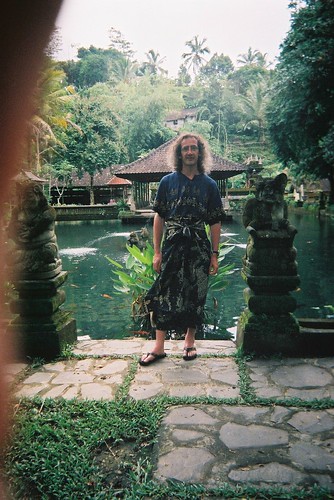Bali: the Island where the Gods dwell
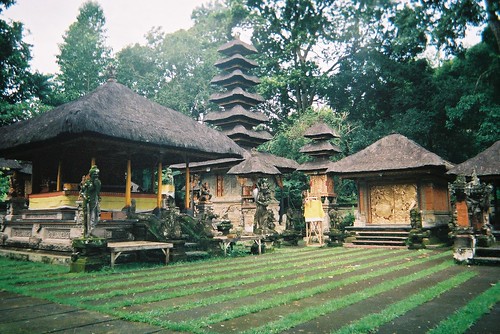
At my feet there was a small square box of woven palm leaves, containing coloured rice, flowers and a small cookie. A stick of incense had been placed on top. The sweet smoke rose up to my nostrils in delicate curls.
I stumbled briefly, but just managed to step over it.
Not that it was much use: soon the rice and the cookie would be eaten by stray dogs, other people would walk over the lovingly placed offering or else it would be flattened by a passing scooter. But it didn’t matter, because its essence would have been extracted by the gods or spirits for whom it was intended. It’s the thought that counts. At dawn, the remains would be swept up and the following morning, women (and occasionally men), dressed in sarongs and with sashes tied around their waists, would make their rounds with trays of more delicately woven palm-leaf boxes, sticks of incense and small flasks of holy water balanced on their heads. Soon, the offerings would have been replaced: stacks of them in some places, just tiny pieces of folded banana leaf with bits of rice on them in others.
This is not a perfunctionary gesture, nor is it blind superstition. To the Balinese, the gods and spirits are as real as the people around them. Ergo, they exist—there is a spiritual presence on this island, which is felt as well as visibly reflected in the offerings placed everywhere you look: on walls, at the entrances of street stalls and upmarket boutiques, in the lobbies of five-star hotels, at the feet of rushing passers-by, in cars and on scooters—even in the middle of the road. It is also reflected, even more visibly and noisily, in the bustling temples, in the processions of people in traditional costumes on their way to or from ceremonies and in the cloth-wrapped statues by the roadside—which may have been there for centuries, but are still dressed and have offerings placed around them now exactly as it was then. It is even reflected in the dances performed for the tourists: they are at the same time spectacle and a form of worship. In Bali, daily life and religious worship are inter-twined. The place where we stayed when we first arrived in Kuta—Komalah Inda I on Poppies I (there are several Komala Indahs in Kuta)—is not only a home-stay with guest rooms, but also a temple. The family, like many who live in traditional compounds, dwell with their gods, and vice versa.
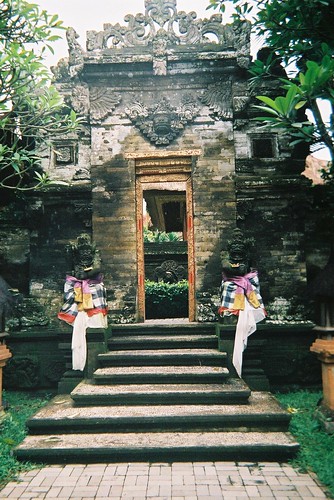
“There is a certain innocence here,” John said. By that, I reckon he meant a lack of cynicism—disregarding for a moment the hard-sell we were subjected to by touts on the beach or the constant accosting whenever we walked past the shops of Poppies I or Jl. Legian: ‘Hassle Street’. This is definitely still Indonesia, but he is right. There is something special about Bali. To find out more about it, we decided to go to Ubud.
John, ‘Surfer-Dude’, fell ill on his second day, probably from something he picked up when swallowing sea water on Kuta beach (look, I’m not gloating, I’ve had two months exposure to any kind of bug and done my bit). So we decided to explore the interior of the island first and put off scuba diving until the following week. This suited me fine, because I wanted to be sure that I was free from panic attacks, which I told John about before he got sick [looks like my scuba diving days are numbered now…].
At first, Ubud felt like more of the same. I could not see past the people sitting in shop entrances, calling for customers, and the endless calls of: “Taxi?”, “Transport?”. But our room, in a guest house just off Jl. Hannoman, was beautiful. It had a four-poster bed, a large bathtub (with hot water!) and a balcony overlooking a small square of rice paddies which was inhabited by a mega-flock of noisy brown ducks, obviously composed of several smaller flocks. Occasionally, some would break away, walk loudly quacking towards the fish ponds in direction of Jl. Hannoman, stop when the others would not follow and return, squabbling. The only time the ducks reached consensus was when the farmer called them in for their evening feed. I could happily spend hours watching them, or the swallows that swept the sky for any small insects which had slipped through the blanket of dragon flies weaving above the paddies on a level just below the swallows. In the evening, just as the sun dipped the clouds in gold, the swallows and dragonflies were seamlessly replaced by bats: big ones that hunted moths and tiny ones—no bigger than moths themselves—that would whizz right past our ears, chasing mosquitoes. Around that time, the evening chorus of frogs would start; at first interspersed with long periods of silence when none of them would make the first call, because keeping it up would be exhausting. But eventually a few would start, immeditely followed by others, and then the whole area would resound with corakings, with underlying harmonics by as many as five or six different species as far as we could distinguish. This was the time to go down to Café Kita, which faced the paddies and our guesthouse from around the corner on Jl. Hannoman, for dinner and puzzle games.
John was content with this routine, staying in and resting during the day. He wasn’t well. He had stomach cramps, his kidneys hurt and he was running a temperature. There was a virus going around in both Kuta and Ubud, but despite recommendations from people who had caught it before, he refused remedial medication. Hell, he would live.
So, from on our second day onwards, I ventured out alone. I began to see Ubud properly when I finally gave up shouting at the transport touts and simply tuned them out. I looked inside the shops and discovered not endless repeats of the same, but charming little boutiques filled with original art work and wonderful, hand-made clothes. I stopped at some of the cafés and found it true that the food in Ubud is the best in Bali, so I booked a cooking course.
The following day, I managed to get John out for an afternoon walk, because he needed the air and exercise. We visited Ubud Palace and the neighbouring temple and gaped at ornate statues and carvings and valuable antiques—including a vast Ming vase—offered as gifts to the royals. On a terrace kitted out with furniture which looked as if it had come straight from a stately mansion, in front of a wall richly carved in red and gold, there stood a rack with underwear and towels hung out to dry. The Palace was inhabited by its caretakers, and far from being a dusty museum, it was very much a place where people (and their dogs) lived.
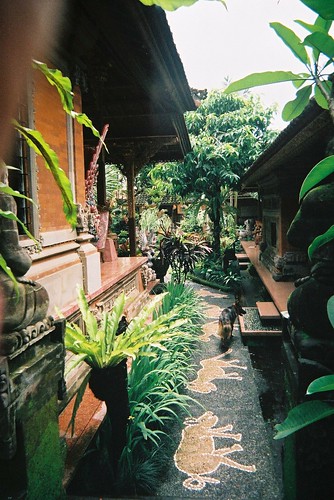
We retreated to the Lotus Café around the corner, with its magnificent view of the lotus ponds in front of Pura Taman Saraswati—the Garden Temple of the Goddess of Wisdom and the Arts. Faced with this view, we could not bring ourselves to sit down at a table straight away, but had to walk up to the temple gate. It was locked.
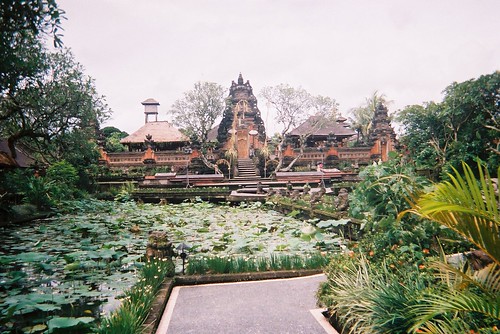
“Do you think..?” John caught my gaze and nodded. There was a side-entrance on the other side of the lotus pond. We dressed in our sarongs, specially brought along for this purpose, tied the sashes around our waists and walked around the pond. A priest at the delicately carved gate nodded at us and we entered. The inside of the temple was light. It was not a particularly sunny day, but the pavement between the strips of grass, the flowers on the well-pruned trees and the walls themselves—which were not dark grey and lichen-infested but dry and light—all seemed to reflect what little light there was in the sky. Perhaps even the sun came out briefly. It was as if we had entered a secret garden. Dewi Saraswati has given her blessing to Ubud, and this is her dwelling.
(John should have taken off his sarong once we got back to the café—he simply can’t carry it off like a local!)
